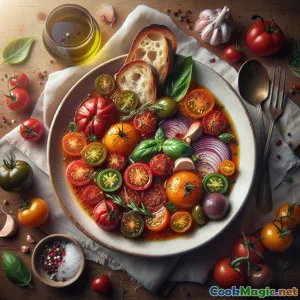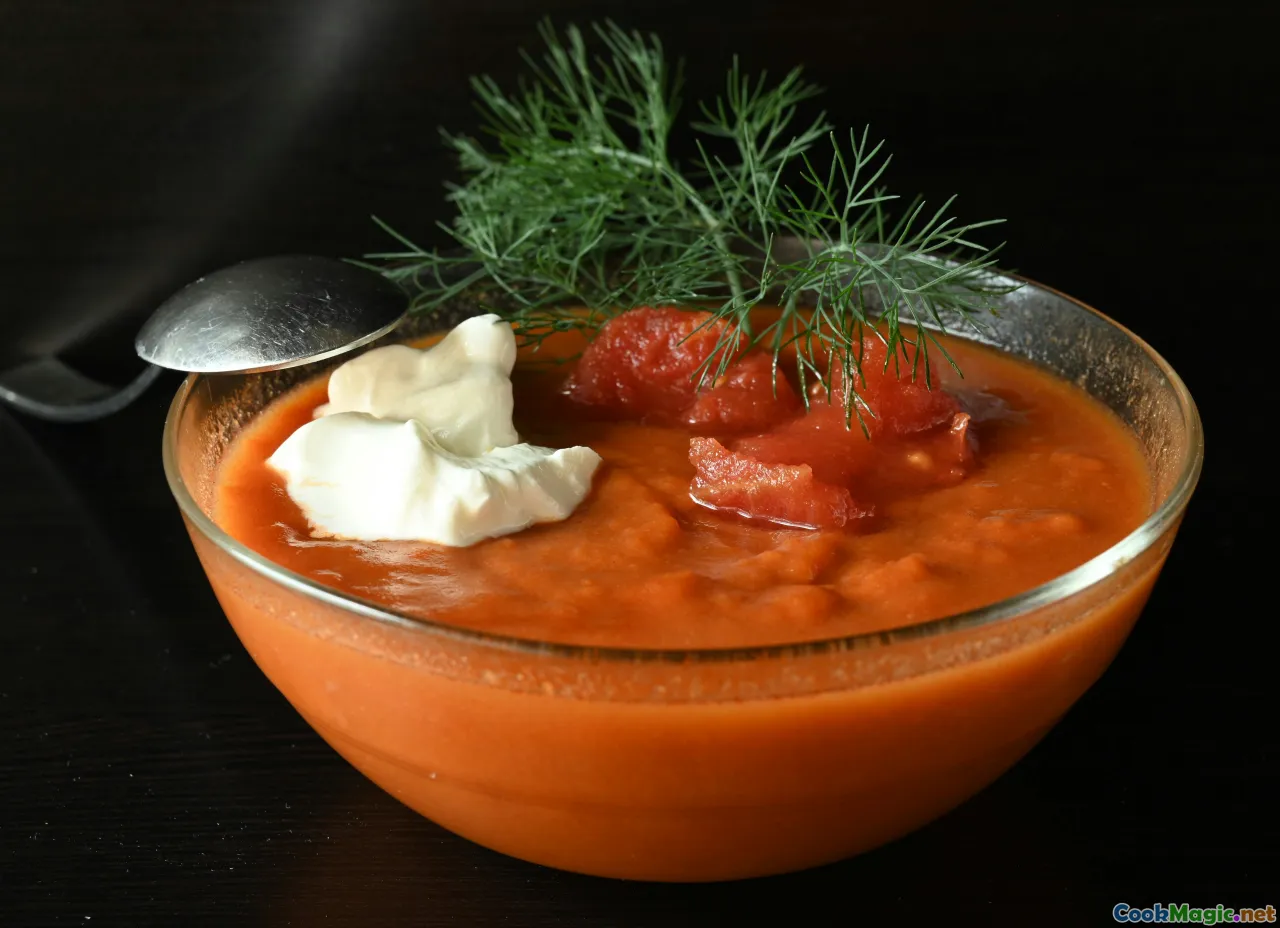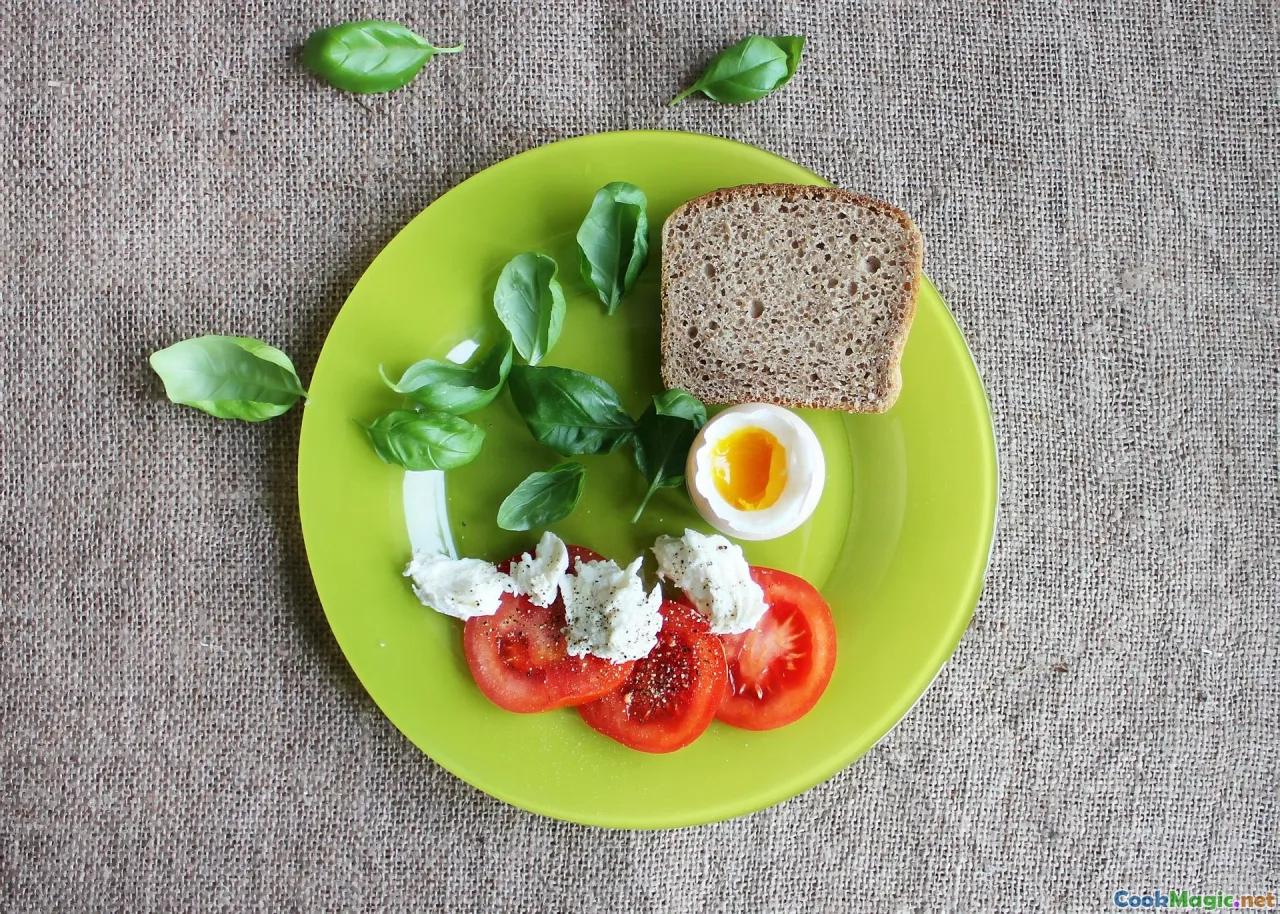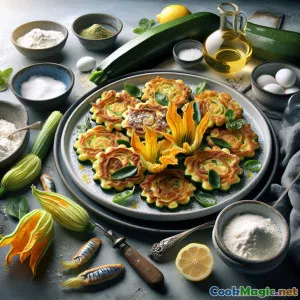
Sommerliche toskanische Tomaten-Brot-Suppe
(Summer Tuscan Tomato-Bread Soup)
(0 Bewertungen)0
97
Oktober 30, 2025
Problem melden
Zutaten
-
1000 grams Reife Tomaten, gehackt (Plum- oder Heirloom-Sorten)
(Very ripe summer tomatoes give best flavor; peeling optional)
-
200 grams Cherrytomaten, halbiert
(For blistered garnish)
-
300 grams Altes rustikales Brot (toskanischer Stil oder Sauerteig), zerrissen
(Day-old bread; trim very hard crusts if needed)
-
800 ml Gemüsebrühe mit wenig Natrium, warm
(Homemade or good-quality boxed)
-
80 ml Natives Olivenöl extra, portionsweise verwendet
(Fruity, peppery oil preferred)
-
3 cloves Knoblauch, dünn geschnitten
(Do not brown; keep gentle heat)
-
30 grams Frische Basilikumblätter
(Plus extra leaves for garnish)
-
25 ml Rotweinessig, geteilt
(15 ml for soup, 10 ml for shallot)
-
8 grams Meersalz
(Adjust to taste; consider broth salinity)
-
2 grams Schwarzer Pfeffer, frisch gemahlen
(Freshly cracked for best aroma)
-
1 grams Chili-Flocken
(For gentle heat)
-
1 tsp Zitronenschale, fein gerieben
(Adds bright, zesty finish)
-
50 grams Schalotte, fein geschnitten
(Quick-pickled garnish)
-
4 grams Zucker
(Only if tomatoes are very acidic)
(Very ripe summer tomatoes give best flavor; peeling optional)
(For blistered garnish)
(Day-old bread; trim very hard crusts if needed)
(Homemade or good-quality boxed)
(Fruity, peppery oil preferred)
(Do not brown; keep gentle heat)
(Plus extra leaves for garnish)
(15 ml for soup, 10 ml for shallot)
(Adjust to taste; consider broth salinity)
(Freshly cracked for best aroma)
(For gentle heat)
(Adds bright, zesty finish)
(Quick-pickled garnish)
(Only if tomatoes are very acidic)
Nährwerte
- Portionen: 4
- Portionsgröße: 1 bowl (320g)
- Calories: 440 kcal
- Carbohydrates: 0 g
- Protein: 9 g
- Fat: 19 g
- Fiber: 7 g
- Sugar: 5 g
- Sodium: 900 mg
- Cholesterol: 0 mg
- Calcium: 90 mg
- Iron: 3.1 mg
Anweisungen
-
1 - Prep the produce and bread:
Core and chop the ripe tomatoes. Halve cherry tomatoes. Tear stale bread into bite-size pieces, trimming very tough crusts. Rinse and pat dry basil leaves.
-
2 - Warm broth and quick-pickle shallot:
Bring vegetable broth to a gentle simmer in a small pot. In a bowl, toss sliced shallot with 10 ml red wine vinegar, a pinch of salt, and a pinch of sugar; set aside to mellow.
-
3 - Start the flavor base:
In a wide pot, warm 40 ml olive oil over medium-low heat. Add sliced garlic and cook 60–90 seconds until fragrant and pale gold; do not brown.
-
4 - Soften the tomatoes:
Add chopped ripe tomatoes to the pot with 4 g salt and half the black pepper. Cook, stirring, until juicy and lightly broken down into a saucy base, about 8–10 minutes.
-
5 - Soak the bread:
In a bowl, combine torn bread with 300 ml warm broth. Toss to moisten evenly; let it drink up the liquid for 2 minutes.
-
6 - Blister cherry tomatoes:
In a small skillet, heat 10 ml olive oil over medium-high. Add cherry tomatoes cut-side down; cook until blistered and just burst, 3–4 minutes. Season with a pinch of salt and set aside.
-
7 - Make quick basil oil:
Pound or blend 20 g basil with 20 ml olive oil and a pinch of salt until vivid green and pourable. Reserve for finishing.
-
8 - Build the pappa:
Add soaked bread to the tomato pot with remaining broth. Stir and simmer gently, stirring and mashing with a spoon until the bread melts into a thick, porridge-like soup.
-
9 - Season and rest:
Stir in remaining olive oil, 15 ml red wine vinegar, remaining black pepper, chili flakes, and lemon zest if using. Adjust salt; add sugar only if tomatoes taste sharp. Remove from heat and rest 5 minutes.
-
10 - Serve with summery finishes:
Ladle into bowls. Swirl with basil oil, top with blistered tomatoes, drain and scatter a little pickled shallot, and finish with torn basil leaves and a final thread of olive oil.
Core and chop the ripe tomatoes. Halve cherry tomatoes. Tear stale bread into bite-size pieces, trimming very tough crusts. Rinse and pat dry basil leaves.
Bring vegetable broth to a gentle simmer in a small pot. In a bowl, toss sliced shallot with 10 ml red wine vinegar, a pinch of salt, and a pinch of sugar; set aside to mellow.
In a wide pot, warm 40 ml olive oil over medium-low heat. Add sliced garlic and cook 60–90 seconds until fragrant and pale gold; do not brown.
Add chopped ripe tomatoes to the pot with 4 g salt and half the black pepper. Cook, stirring, until juicy and lightly broken down into a saucy base, about 8–10 minutes.
In a bowl, combine torn bread with 300 ml warm broth. Toss to moisten evenly; let it drink up the liquid for 2 minutes.
In a small skillet, heat 10 ml olive oil over medium-high. Add cherry tomatoes cut-side down; cook until blistered and just burst, 3–4 minutes. Season with a pinch of salt and set aside.
Pound or blend 20 g basil with 20 ml olive oil and a pinch of salt until vivid green and pourable. Reserve for finishing.
Add soaked bread to the tomato pot with remaining broth. Stir and simmer gently, stirring and mashing with a spoon until the bread melts into a thick, porridge-like soup.
Stir in remaining olive oil, 15 ml red wine vinegar, remaining black pepper, chili flakes, and lemon zest if using. Adjust salt; add sugar only if tomatoes taste sharp. Remove from heat and rest 5 minutes.
Ladle into bowls. Swirl with basil oil, top with blistered tomatoes, drain and scatter a little pickled shallot, and finish with torn basil leaves and a final thread of olive oil.
Mehr über: Sommerliche toskanische Tomaten-Brot-Suppe
Pappa al Pomodoro Estiva (Summer Tuscan Tomato-Bread Soup)
Pappa al pomodoro is the Tuscan lesson in culinary thrift and pure flavor: yesterday’s bread transformed by today’s sun-sweet tomatoes into a silken, spoonable comfort. This “Estiva” (summer) rendition leans into brightness and freshness. It keeps the cooking gentle and brief, layers in a peppery basil oil, and crowns the bowl with blistered cherry tomatoes for juicy pops of sweetness. The result is rustic yet refined—a dish you can enjoy warm on a breezy evening or at room temperature when the day is hot and languid.
What makes it special
- Seasonal focus: Using peak-season tomatoes is non-negotiable for extraordinary flavor. Ripe fruit eliminates the need for long simmering, preserving a garden-fresh profile.
- Texture you control: The amount of broth and how vigorously you stir determine whether the soup is loose and silky or thick and spoon-standing. Pappa should be nubby, never gluey.
- Aromatic finish: Basil oil added off the heat protects its vivid color and perfume. A dash of vinegar wakes up the sweetness without “tasting of vinegar.”
- Waste-not wisdom: The dish exists because Tuscan households prized every crumb. Stale bread becomes the star, not a compromise.
Ingredient notes and swaps
- Tomatoes: Choose meaty varieties like San Marzano, Roma, or any deeply colored heirloom. If skins bother you, peel by blanching for 30 seconds, but it’s optional here.
- Bread: Tuscan pane is famously unsalted and perfect for soups; a good rustic sourdough works too. Avoid soft sandwich bread—it turns pasty.
- Olive oil: A robust extra-virgin boosts fruitiness and pepper. It’s a core flavor, not just a cooking medium.
- Broth: Low-sodium vegetable broth keeps things vegetarian. Light chicken stock is also delicious if that suits your table.
- Heat and brightness: Chili flakes and lemon zest are optional but fabulous. They add dimension without overshadowing the tomatoes.
Technique tips
- Salt early, adjust late: Salting tomatoes at the start helps them collapse quickly and deepen in flavor. Final adjustments come after the bread has thickened the soup.
- Soak the bread: Briefly soaking ensures even hydration, avoiding dry pockets. Stir and mash gently to create the signature porridge-like texture.
- Rest before serving: Five minutes off the heat allows the bread to settle and the flavors to marry.
- Basil oil shortcut: If you don’t have a mortar or blender, finely chop basil and stir with oil and a pinch of salt; let sit a few minutes to bloom.
Serving ideas
- Temperature: Serve warm or at room temperature—never fridge-cold, which mutes aroma and tightens texture.
- Garnishes: Besides blistered tomatoes and basil oil, add shaved fennel, torn burrata (for non-vegan), or a few capers for briny pops.
- Pairings: A chilled glass of Vermentino or an easygoing Sangiovese rosato complements the soup’s brightness. Crusty bread on the side is optional but traditionalists will approve.
History and cultural context
Pappa al pomodoro is rooted in cucina povera—the “poor kitchen” of rural Tuscany—where resourcefulness shaped tradition. Before tomatoes, bread-based soups featured water, herbs, and olive oil; once tomatoes arrived in Europe and entered the Italian kitchen, they became a natural companion to stale bread. The dish rose from farmhouse practicality to regional emblem, celebrated in Florence and Siena alike and taught in home kitchens as a rite of passage. “Pappa” refers to the comforting, mushy consistency, the kind that feeds families across ages and seasons. Summer versions, like this Estiva, favor minimal cooking to showcase raw sun energy captured in ripe fruit and grassy oil.
Make-ahead and storage
- Short rest: Improves flavor; it thickens as it sits. Thin with warm broth or water to loosen.
- Refrigeration: Up to 3 days. Bring to room temperature or rewarm gently with a splash of liquid.
- Freezing: Possible, though basil oil and fresh garnishes are best made fresh. Freeze the base soup up to 2 months.
Variations
- Roasted tomato base: For deeper sweetness, roast halved tomatoes with olive oil and salt at 200°C/400°F until jammy, then proceed.
- Smoky note: Add a pinch of smoked paprika or char a pepper, peel, and chop into the pot.
- Protein add-ins: Top with soft-cooked eggs or ribbons of grilled zucchini. Keep it light; the soup’s texture should remain the star.
- Gluten-free path: Use gluten-free rustic loaves that mimic country bread; adjust liquid because some GF crumbs hydrate differently.
Common pitfalls
- Overseasoning early: Broth and bread both carry salt; finalize seasoning right before serving.
- Overcooking garlic: Bitter garlic will dominate a delicate soup. Keep heat gentle.
- Wrong bread: Ultra-soft, enriched breads collapse into paste. Choose sturdy, open-crumb loaves.
Final thoughts
Pappa al Pomodoro Estiva captures the Italian summer in a bowl—economical, aromatic, and joyfully simple. It’s proof that technique, restraint, and impeccable ingredients can turn pantry staples into something memorable. With its cascade of basil perfume and bursts of warm cherry tomato, this version respects tradition while feeling blissfully current at any modern table.
























